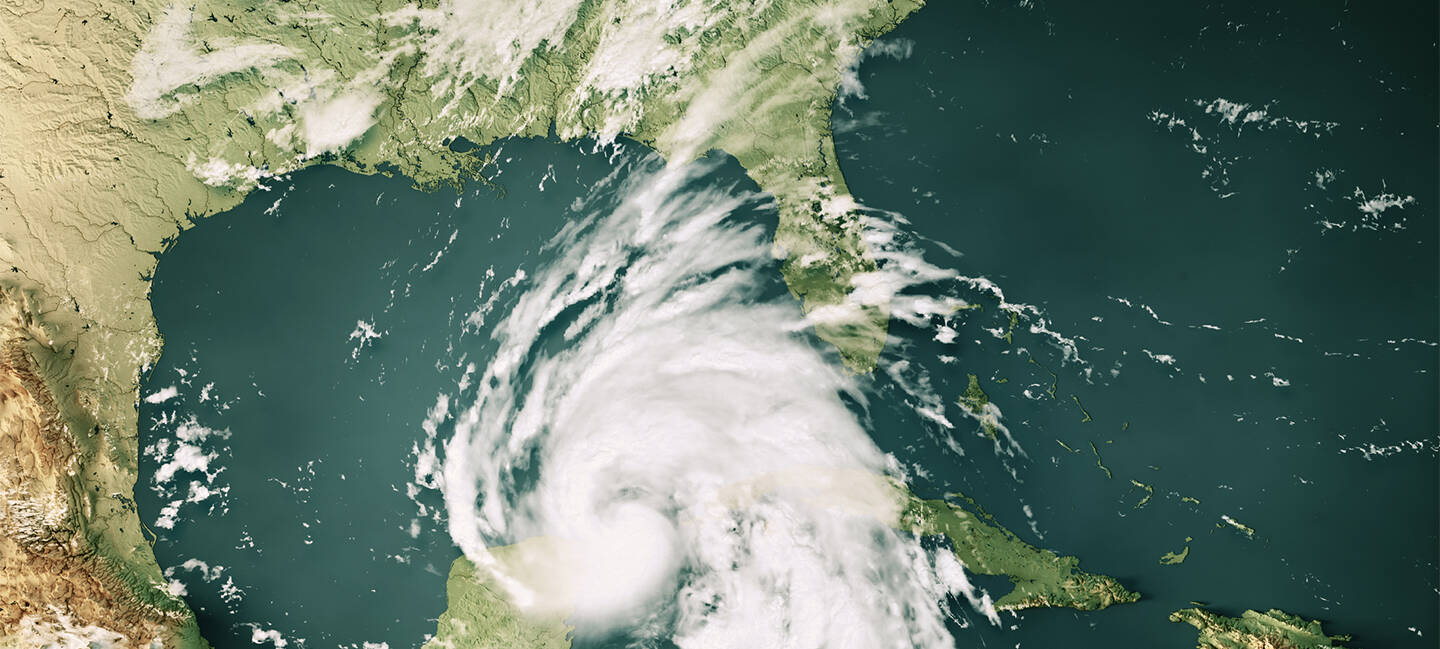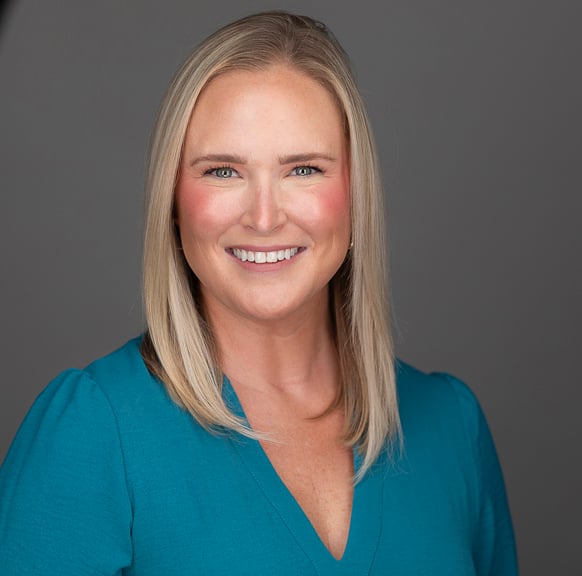In the Eye of the Storm: Care That Never Stops
When Hurricanes Helene and Milton swept through the Tampa Bay area just days apart in fall 2024, they brought evacuation orders, flooded roads and widespread power outages. The community faced significant challenges. But inside Moffitt Cancer Center, care continued.
Hundreds of Moffitt team members — from nurses and physicians to facilities staff and food service workers — worked around the clock as rain and wind battered the region. They slept on campus, navigated emergency conditions and found calm in the chaos, always focused on keeping patients safe, supported and cared for without interruption.
These are just a few of their stories.
JP Hooks: Safeguarding the Science
For JP Hooks, riding out a hurricane isn’t just about staying safe — it’s about protecting research. When Hurricanes Helene and Milton approached, he and his team became guardians of more than 500 freezers, decades of irreplaceable samples and 84 unique research labs.

As Hurricanes Helene and Milton approached, JP Hooks and his team became guardians of more than 500 freezers, decades of irreplaceable samples and 84 unique research labs.
“Managing labs is like managing a shopping mall,” said Hooks, manager of Research Environmental Health and Safety at Moffitt. “Each one needs something different during storm prep.”
His team tailored emergency plans, walked through “what-if” scenarios in advance and carefully coordinated handoffs between teams to ensure that every sample and piece of equipment was protected. “This team of people are heroes. They are workhorses. They logged 20,000 steps a day preparing everything. One of us even hit 38,000.”
During Hurricane Milton, powerful winds roared outside making the bridge between the Vincent A. Stabile Research Building and the Moffitt Research Center impassable. Hooks split off and rode out the night in the Moffitt Research Center with two other teammates, monitoring equipment, flood conditions and any threat to the research infrastructure.
“We are here because the research is here for patients,” Hooks said. “The researchers entrust us with their work. It’s our job to ensure they can return and pick up right where they left off — like the storm never happened.”
The research spaces also became a quiet resting place for frontline teams. “Facilities staff would come nap in our area. Patient-facing teams needed a break,” he said. “It made me feel good we could give them that moment to rest.”
Even during a hurricane, Hooks never loses sight of the bigger picture. “It’s a commitment to the mission,” he said. “It’s the value of research and always putting patients first.”
Dr. Hien Liu: Steadfast in the Storm
Hien Liu, MD, an oncologist in the Department of Blood and Marrow Transplant and Cellular Immunotherapy, is no stranger to pressure. But when hurricanes threaten the Tampa Bay area, it brings a new kind of intensity.

Hien Liu, MD, and her team worked around the clock as Hurricane Milton approached, admitting outpatient bone marrow transplant patients who could no longer travel safely.
“We had to consider every moving piece,” Liu said. “Transplant patients can’t wait. Some are getting stem cells from donors across the world. If flights are canceled or roads are closed, you must figure out how to get those cells here safely.”
As Hurricane Milton approached, Liu and her team worked around the clock, admitting outpatient transplant patients who could no longer travel safely. They also prepped the facility for emergency stem cell collections and arranged for the apheresis team to shelter on-site if needed.
“There were patients who heroically received their cells on time,” she said. “Some were rerouted and driven in — it was incredible coordination.”
Liu stayed on campus for over 50 hours alongside a dedicated group of transplant staff. “We had a hallway full of snacks and food delivered before lockdown. Everyone showed up ready to care for our patients — and each other. The camaraderie among care providers was truly inspiring.”
What meant the most to Liu was how calm her patients remained through the storm. “They told me, ‘I know I am safe here.’ That meant a lot,” she said. “They weren’t fearful.”
When asked to sum up the experience, Liu didn’t hesitate: “Dedication. To our patients, our team and what we are here to do.”
Terry Blevins: Feeding the Front Lines
For nearly two decades, Terry Blevins has worked in Moffitt’s kitchen. But before that, he served as a Green Beret in the U.S. Army. That grit and discipline came in handy during hurricanes Helene and Milton, when Blevins stayed on campus and led the overnight crew.
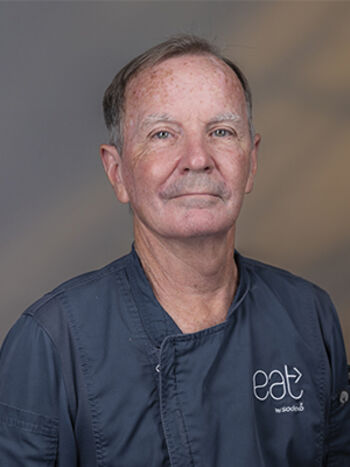
Terry Blevins and his colleagues were responsible for feeding hundreds of patients, staff and emergency personnel who were sheltered on-site during Helene and Milton.
“I’m used to getting up at 3 a.m.,” he said. “Even during the storm, I was the first one up and the last to bed.”
He and his colleagues were responsible for feeding hundreds of patients, staff and emergency personnel who were sheltered on-site. Despite a reduced kitchen staff, the pace didn’t slow.
“We have a hurricane supply already stored and a detailed plan down to the meal,” Blevins said. “Even during the storm, patients get their usual menus. We just make it happen.”
Blevins helped prep for breakfast, lunch and dinner each day, working from before dawn to lights out. “You finish what you’re doing, and then you go help someone else,” he said. “No arguments, no hesitation. Just teamwork.”
For Blevins, it wasn’t just about the food but supporting people in a difficult moment. He remembers a man who came to the cafeteria for every meal during Hurricane Milton because he didn’t want to eat in front of his wife — a patient with stomach cancer. “He just wanted to talk,” Blevins recalled. “It helped take his mind off things.”
Blevins’ approach is simple: Show up, stay optimistic and support the mission. “I’ve been through wars,” he said. “This isn’t hard. You just stay positive and keep going.”
Anna Spanolios: Leading Through the Storm
Patient Care Manager Anna Spanolios has called Moffitt her second home for nearly three decades. When hurricane season rolls around, she doesn’t hesitate to stay on campus and help lead her team through a storm.
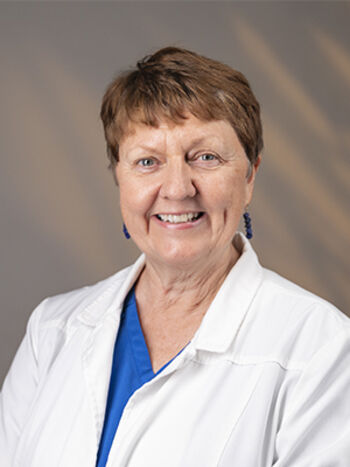
Patient Care Manager Anna Spanolios helped manage Moffitt’s inpatient hematology unit during Helene and Milton.
During Hurricanes Helene and Milton, Spanolios helped manage Moffitt’s inpatient hematology unit — a 24-bed floor where most patients stay put due to the nature of their care. “Our patients can’t go home, and that means we stay,” she said.
Her home in Tarpon Springs is in an evacuation zone, so Moffitt often becomes her shelter, as well. “I’ve done this at least five times,” she said. “When a storm is coming, we prep, we plan, we cross our fingers — and then we move in.”
For Hurricane Helene, she stayed on-site for 36 hours, helping to coordinate patient coverage, assign sleeping spaces and support the care team as they rotated 12-hour shifts. While her assistant manager covered Hurricane Milton, Spanolios remembers the calm coordination behind the scenes — and the emotional moments shared at the patient’s bedside.
“The storms bond us,” she said. “We are glued to the news, we’re sharing stories — but in the middle of all that, we’re taking care of people. Our patients are facing cancer, but they are also worried about their homes and loved ones.”
Family members of patients were allowed to stay overnight, and Spanolios remembers how they checked on the nurses, just as often as the nurses checked on them. “It’s a Florida thing — we are all in it together.”
Through the storms, her focus never wavered. “Our patients are already going through so much. If they can face cancer, we can face a storm for them.”
Mary Margaret Braddock: Finding Care Between Storms
Mary Margaret Braddock was scheduled for melanoma surgery on Sept. 26, 2024, the day Hurricane Helene hit Tampa. “I was literally all marked up for surgery. I had my bloodwork done, and I met with the team, and they said, ‘See you tomorrow,’” she recalled. “Then they canceled it. I was devastated. I just wanted the cancer out of my body.”
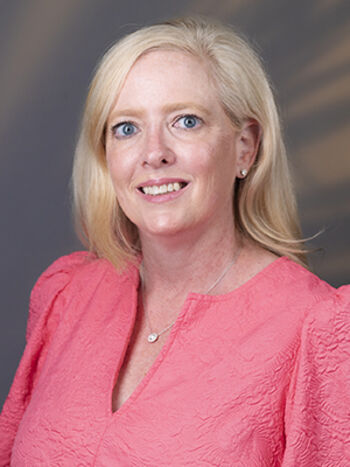
Mary Margaret Braddock was scheduled for melanoma surgery on Sept. 26, 2024, the day Helene hit Tampa.
She was recovering from a previous hospitalization due to a severe reaction to immunotherapy and had already faced multiple recurrences. With Hurricane Milton on the horizon, she feared surgery would be delayed for weeks.
Instead, the opposite happened. Moffitt’s care team found a way to fit her in the following Tuesday — between the two storms.
“I think I got in because people couldn’t travel, and I live nearby,” she said. “I felt incredibly supported by the team. They could’ve been stressed, dealing with the storm personally, but you would’ve never known.”
After surgery, while evacuating her flood-zone home in Tampa for Milton, Braddock reopened her incision while lifting family belongings. “I probably shouldn’t have been walking,” she said. “But I was moving things upstairs, trying to protect what I could.”
Even then, Moffitt’s team stayed in touch to help her manage her wound care remotely. “They gave me their cell numbers,” she said. “That’s how committed they were — while dealing with the hurricane, too.”
Despite the chaos of two hurricanes and a long cancer journey, Braddock finally got the outcome she had been looking for: no evidence of disease.
“I was lucky,” she said. “The treatment worked, the cancer was gone, and they still made sure I had surgery. I’ll never forget that.”



